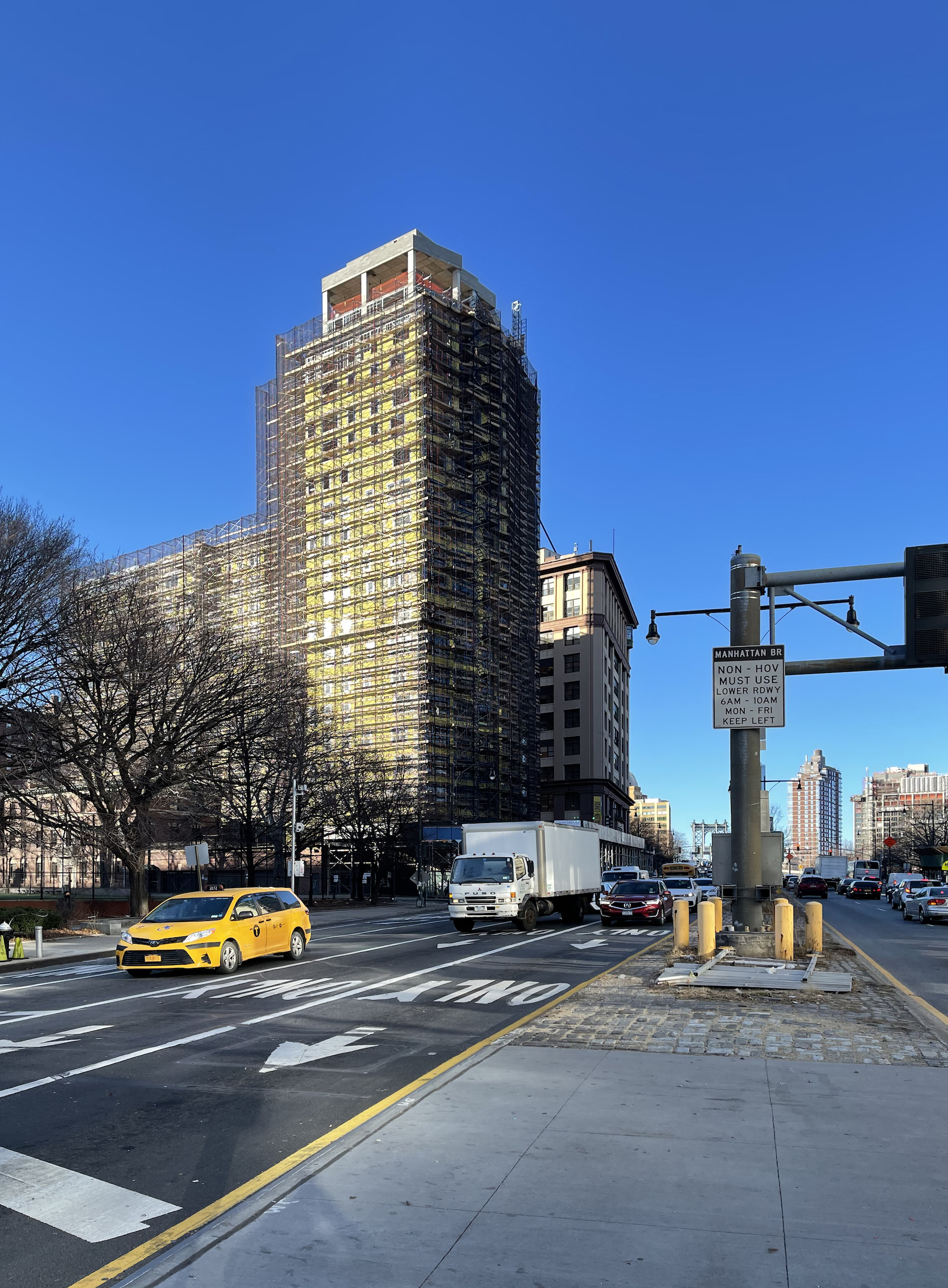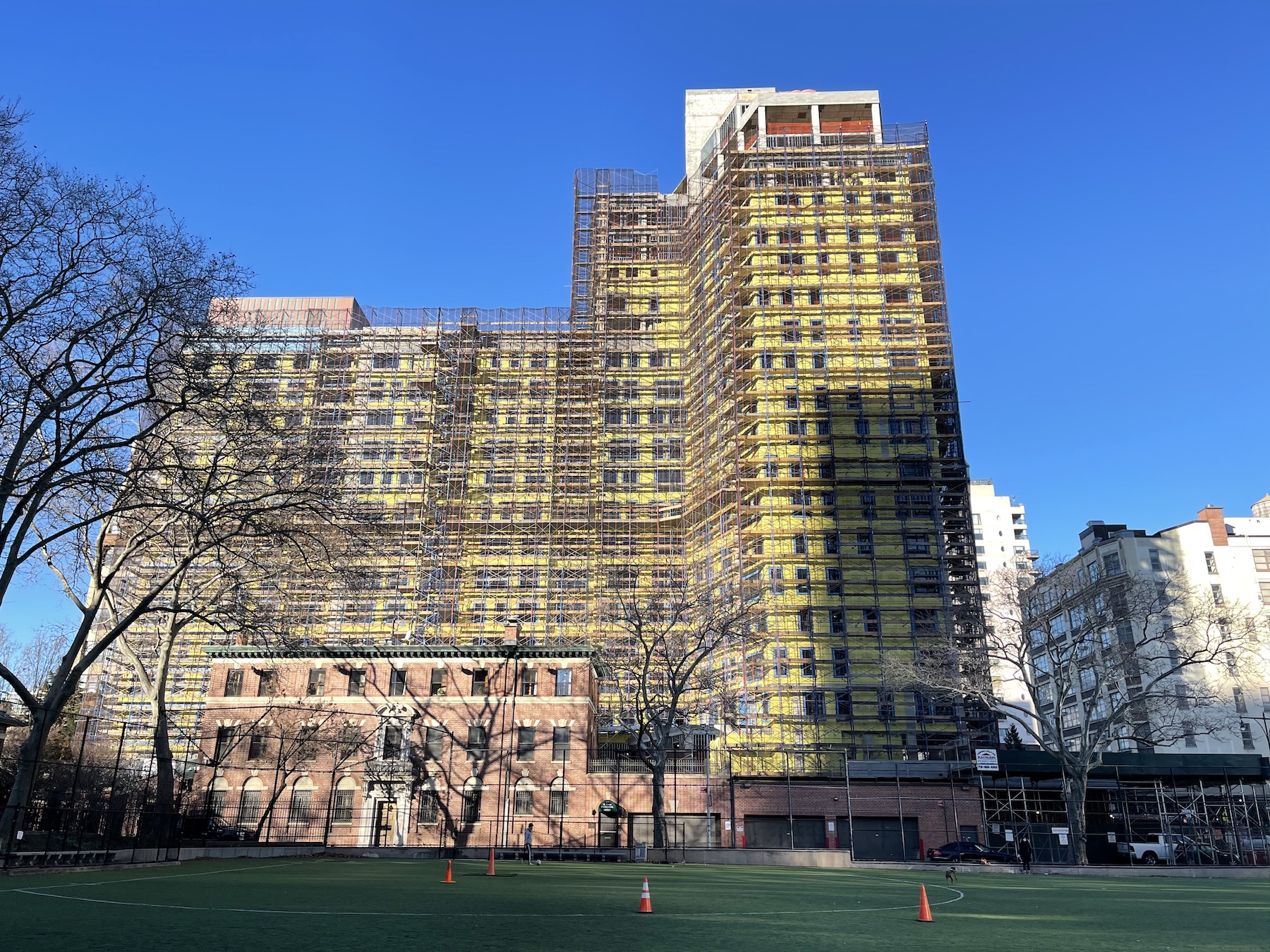Among its many legendary attributes, New York City is known for its rabid sports fans, foldable pizza slices, and wealth of arts and culture. But it’s the city’s iconic architecture that perhaps best defines its footprint I n the northeast. When Delshah Capital and OTL Enterprises selected a team to design and build a 20-story high rise in the bustling borough of Brooklyn, it was literally Go Big or Go Home.
The Challenge
The 211-foot stunner situated at 22 Chapel Street presented an exciting opportunity to build a towering structure to compliment the revitalization of downtown Brooklyn. Designed by CetraRuddy Architecture, the property is located at the south end of the Manhattan Bridge, presenting it with a high amount of exposure to admirers near and far.
Housed within its 167,000 square feet will be 180 residential units, retail space, and a community facility. Since the building needs to withstand the extremes of New York weather – including punishing rain and snow – a superior weather barrier system was a must. Additionally, the building exterior required a barrier material that would work well with metal panels and provide high levels of energy efficiency. That’s when two Georgia-Pacific innovative water-resistive barrier/air barrier (WRB/AB) solutions answered the call: DensElement® Barrier System and DensDefy™ Accessories.
Not Just a Square Box
The building’s southern-facing façade and tower were uniquely designed to allow for exceptional views and to flood the interior with natural light. “It’s not just a square box,” said Darren Glisan, senior project manager at Titanium Construction Services, the general contracting firm hired for the job. “The façade elevation is highly complex in that the slab edges do not align with one another at the east end of the building. That was a fun challenge,” Glisan continued.

Another notable part of the job was that DensElement Barrier System and DensDefy Accessories weren’t initially specified. The façade design originally called for porcelain tile and sheathing that was specifically designed for that material. However, the porcelain was later shelved for metal panels since they were more cost-efficient and easier to work with.
That’s why Willis Ting, project manager and senior associate at CetraRuddy Architecture, turned to DensElement Barrier System, which integrates gypsum sheathing with a water-resistive barrier and an air barrier, along with DensDefy Accessories to seal the building envelope. According to Ting, “The DensElement Barrier System (and DensDefy Accessories work) better with certain products – and metal panels are one of them. And, considering all the seams that have to be protected from the weather, we needed to choose the best (system) for the job.”
Thornton Tomasetti, the façade consultants and structural engineers, still need proof before moving forward. “Thornton Tomasetti are serious engineers. They know their stuff and they don’t compromise,” remarked Glisan. The team conducted a WUFI analysis, the industry’s most advanced analytical simulation of hygrothermic (the combination of heat and moisture) conditions in a building envelope. The results spoke for themselves, demonstrating that DensElement Barrier System with DensDefy Accessories was indeed the best water-resistive/air barrier for the job. Ting noted convincingly, “It’s a one-stop shop. (DensElement and DensDefy make) the design team feel secure that we’re handing off the right products to the construction team.”
Exceeding Sky-High Expectations
Once the build began, DensElement Barrier System and DensDefy Accessories were put to the true test. “You need to make sure the whole building is sealed the right way. By selecting the right (products), we know the building will not leak, is fully airtight, and the insulation will be protected,” said Ting.
Among the advantages of DensDefy Accessories are the simplicity and efficiency of installation, even in wet weather. DensDefy™ Liquid Flashing waterproofing, adhesive, and detailing compound seals rough openings, penetrations, joints, and seams. DensDefy™ Transition Membrane is a self-adhered, butyl-based membrane used on drift or control joints, vertical expansion joints, and gaps greater than 1” to ensure envelope continuity. “Together, they perform as though they’re a waterproofing membrane, and that simplicity is their greatest benefit,” said Glisan of DensDefy Accessories’ performance on the job.
While “time is money” is a figure of speech for some, for the team on a build, it’s what drives their business. Glisan went on to discuss how waterproofing materials have only gotten more complex, specifically referring to liquid-applied membranes, which often require installers to double-back to ensure the material specifications are being followed.
Another challenge when roll-on-specific applications are used is the material driving onto finished elements of the building, like windows and the floors below. DensElement Barrier System removed any worry about spending extra time on quality control.
The heightened level of durability and efficiency delivered by the Georgia-Pacific products was echoed by everyone contributing to the project. After using DensElement Barrier System and DensDefy Accessories for the first time, John Vennera, field supervisor at PG New York, remarked, “we’re closing the building up way quicker than normal, which allows the other trades to move along. And, obviously, any client would appreciate that.”
Mike Whitmore, the purchasing director at PG New York, not only said that the speed of the installation process cut labor costs, but also the two-in-one combination of sheathing and weather resistance for a set price from one company made purchasing faster and easier. “There were even (fewer) bills for scaffolding because the guys spent less time on it,” said Whitmore. “Combining the waterproofing and sheathing is good because when it comes to warranty time, you have one single source.”
DensElement Barrier System and DensDefy Accessories can be installed without damage in rain and even in New York’s winter weather. This helped streamline the installation and overall production schedule by allowing the window installers to move in quicker and, in turn, close the building faster so interior work could stay on schedule.
A product is only as good as the company standing behind it. From the development of innovative building materials to the distribution network making sure they arrive on time, Georgia-Pacific is proud to be part of Brooklyn’s newest landmark building. It’s been said that everyone in New York has a story; thanks to those who put their trust in us at 22 Chapel Street, we do, too. 20 stories, to be exact.
Related Stories
| Aug 11, 2010
America's Greenest Hospital
Hospitals are energy gluttons. With 24/7/365 operating schedules and stringent requirements for air quality in ORs and other clinical areas, an acute-care hospital will gobble up about twice the energy per square foot of, say, a commercial office building. It is an achievement worth noting, therefore, when a major hospital achieves LEED Platinum status, especially when that hospital attains 14 ...
| Aug 11, 2010
Concrete Solutions
About five or six years ago, officials at the University of California at Berkeley came to the conclusion that they needed to build a proper home for the university's collection of 900,000 rare Chinese, Japanese, and Korean books and materials. East Asian studies is an important curriculum at Berkeley, with more than 70 scholars teaching some 200 courses devoted to the topic, and Berkeley's pro...
| Aug 11, 2010
Piano's 'Flying Carpet'
Italian architect Renzo Piano refers to his $294 million, 264,000-sf Modern Wing of the Art Institute of Chicago as a “temple of light.” That's all well and good, but how did Piano and the engineers from London-based Arup create an almost entirely naturally lit interior while still protecting the priceless works of art in the Institute's third-floor galleries from dangerous ultravio...
| Aug 11, 2010
Precast All the Way
For years, precast concrete has been viewed as a mass-produced product with no personality or visual appeal—the vanilla of building materials. Thanks to recent technological innovations in precast molds and thin veneers, however, that image is changing. As precast—concrete building components that are poured and molded offsite—continues to develop a vibrant personality all it...
| Aug 11, 2010
Bronze Award: John G. Shedd Aquarium, Chicago, Ill.
To complete the $55 million renovation of the historic John G. Shedd Aquarium in the allotted 17-month schedule, the Building Team had to move fast to renovate and update exhibit and back-of-house maintenance spaces, expand the visitor group holding area, upgrade the mechanical systems, and construct a single-story steel structure on top of the existing oceanarium to accommodate staff office sp...
| Aug 11, 2010
AIA Course: Building with concrete – Design and construction techniques
Concrete maintains a special reputation for strength, durability, flexibility, and sustainability. These associations and a host of other factors have made it one of the most widely used building materials globally in just one century. Take this free AIA/CES course from Building Design+Construction and earn 1.0 AIA learning unit.
| Aug 11, 2010
Great Solutions: Green Building
27. Next-Generation Green Roofs Sprout up in New York New York is not particularly known for its green roofs, but two recent projects may put the Big Apple on the map. In spring 2010, the Lincoln Center for the Performing Arts will debut one of the nation's first fully walkable green roofs. Located across from the Juilliard School in Lincoln Center's North Plaza, Illumination Lawn will consist ...
| Aug 11, 2010
Pioneer Courthouse: Shaking up the court
In the days when three-quarters of America was a wild, lawless no-man's land, Pioneer Courthouse in Portland, Ore., stood out as a symbol of justice and national unity. The oldest surviving federal structure in the Pacific Northwest and the second-oldest courthouse west of the Mississippi, Pioneer Courthouse was designed in 1875 by Alfred Mullett, the Supervising Architect of the Treasury.
| Aug 11, 2010
Gold Award: Eisenhower Theater, Washington, D.C.
The Eisenhower Theater in the John F. Kennedy Center for the Performing Arts in Washington, D.C., opened in 1971. By the turn of the century, after three-plus decades of heavy use, the 1,142-seat box-within-a-box playhouse on the Potomac was starting to show its age. Poor lighting and tired, worn finishes created a gloomy atmosphere.
| Aug 11, 2010
Giants 300 University Report
University construction spending is 13% higher than a year ago—mostly for residence halls and infrastructure on public campuses—and is expected to slip less than 5% over the next two years. However, the value of starts dropped about 10% in recent months and will not return to the 2007–08 peak for about two years.






